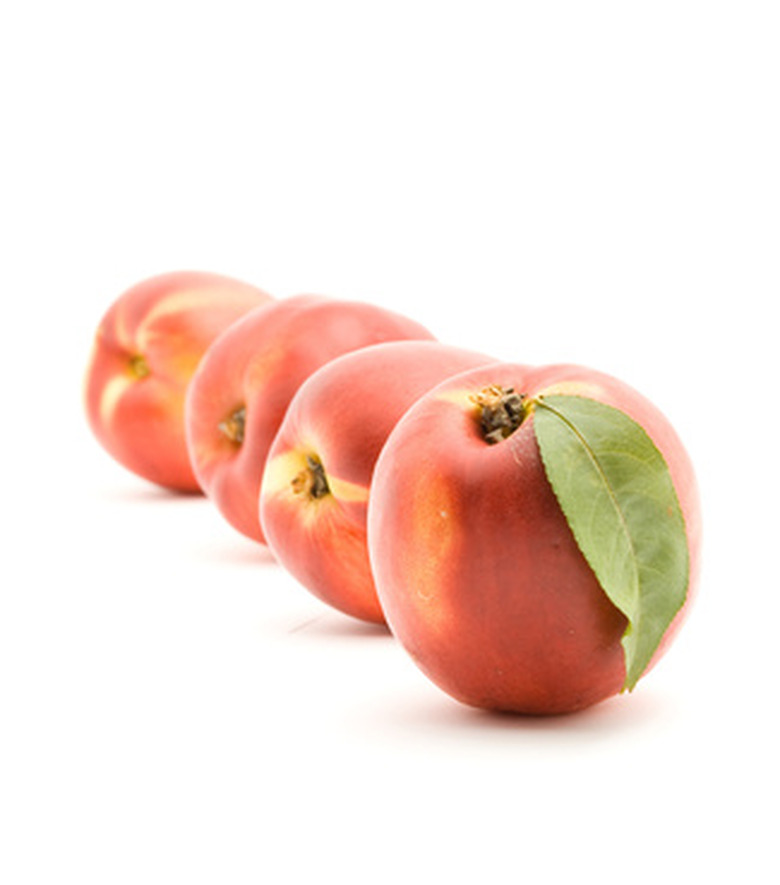List Of Types Of Peach Trees
Peaches are a favorite fruit for growing in the home garden. There are hundreds of varieties of peaches available for the home gardener, but not all varieties are suitable for growing in every area. Check with your local county agricultural extension office for a list of suitable varieties of peach trees and for fertilizing and spraying schedules that are appropriate for your area.
Freestone
Freestone peaches have flesh that falls away easily from the pit when the peach is eaten or sliced. They are the peach most commonly grown in the home garden and many improved varieties are now available. Freestone peaches are also commonly used for baking due to the ease of processing.
Clingstone
With clingstone or "cling" peaches, the flesh does not fall away easily from the pit. It was always thought clingstone peaches were the sweetest peaches until improved varieties of freestone peaches became available. However, the clingstone peach is still the preferred peach for canning because the flesh is firmer and holds up better in the canning process. This means the canning juice remains clear, which creates a better product.
- Peaches are a favorite fruit for growing in the home garden.
- However, the clingstone peach is still the preferred peach for canning because the flesh is firmer and holds up better in the canning process.
Semi-Cling
Semi-cling or semi-freestone peaches are a cross between the clingstone and freestone varieties of peaches. The flesh clings to the pit until the fruit is fully ripe when it falls away from the pit. There is not an advantage in growing the semi-clingstone fruit and the number of varieties available for planting is limited.
Nectarines
Nectarines are simply peaches without the fuzzy skin. They are generally smaller than peaches and the skin has a stronger aroma. Nectarines have either yellow or red flesh and are used in cooking and fresh eating in the same manner as peaches. They are available in freestone and clingstone varieties.
- Semi-cling or semi-freestone peaches are a cross between the clingstone and freestone varieties of peaches.
- There is not an advantage in growing the semi-clingstone fruit and the number of varieties available for planting is limited.
List Of Types Of Peach Trees
Peach (Prunus persica) cultivation originated in China more than 3,000 years ago. In 1571, peaches were brought to the New World by Spanish missionaries, and today peaches are the second most popular fruit in the United States. Flesh color can range from a soft yellow to an orange yellow or yellow streaked with red. Other yellow-fleshed peach varieties are primarily yellow but become red closer to the pit. Unlike most peach trees in the United States, most Asian peach trees produce white-fleshed fruit. Although less popular than yellow varieties here, white peaches are available in the United States as well. Common white peach tree cultivars are "Babcock," "Nectar," "Belle of Georgia," "Strawberry Free" and "Arctic Supreme." Clingstones are more difficult to remove from their pits. Unlike clingstone peaches, the fruit from freestone peach trees easily separates from the pit; often the stone can be removed from the peach flesh by hand. Dwarf or miniature peach tree varieties are good options for home gardeners with limited growing space.
- Peach (Prunus persica) cultivation originated in China more than 3,000 years ago.
- Unlike clingstone peaches, the fruit from freestone peach trees easily separates from the pit; often the stone can be removed from the peach flesh by hand.
References
- UGA: Peach – Prunus persica
- Ohio State: Growing Peaches and Nectarines in the Home Landscape
- University of California Cooperative Extension: Growing Temperate Tree Fruit and Nut Crops in the Home Garden and Landscape
- National Gardening Association: Planning for Peaches
- The New Sunset Western Garden Book; Kathleen Norris Brenzel, ed., pp. 479-482
- Clemson Cooperative Extension: What Is the Difference Between a Freestone and Clingstone Type Peach?
- Mother Earth News: Growing Dwarf Fruit Trees and Nut Trees
- Clemson Cooperative Extension: Different Kinds of Peaches
- Ohio State University Extension Fact Sheet: Growing Peaches and Nectarines in the Home Landscape
